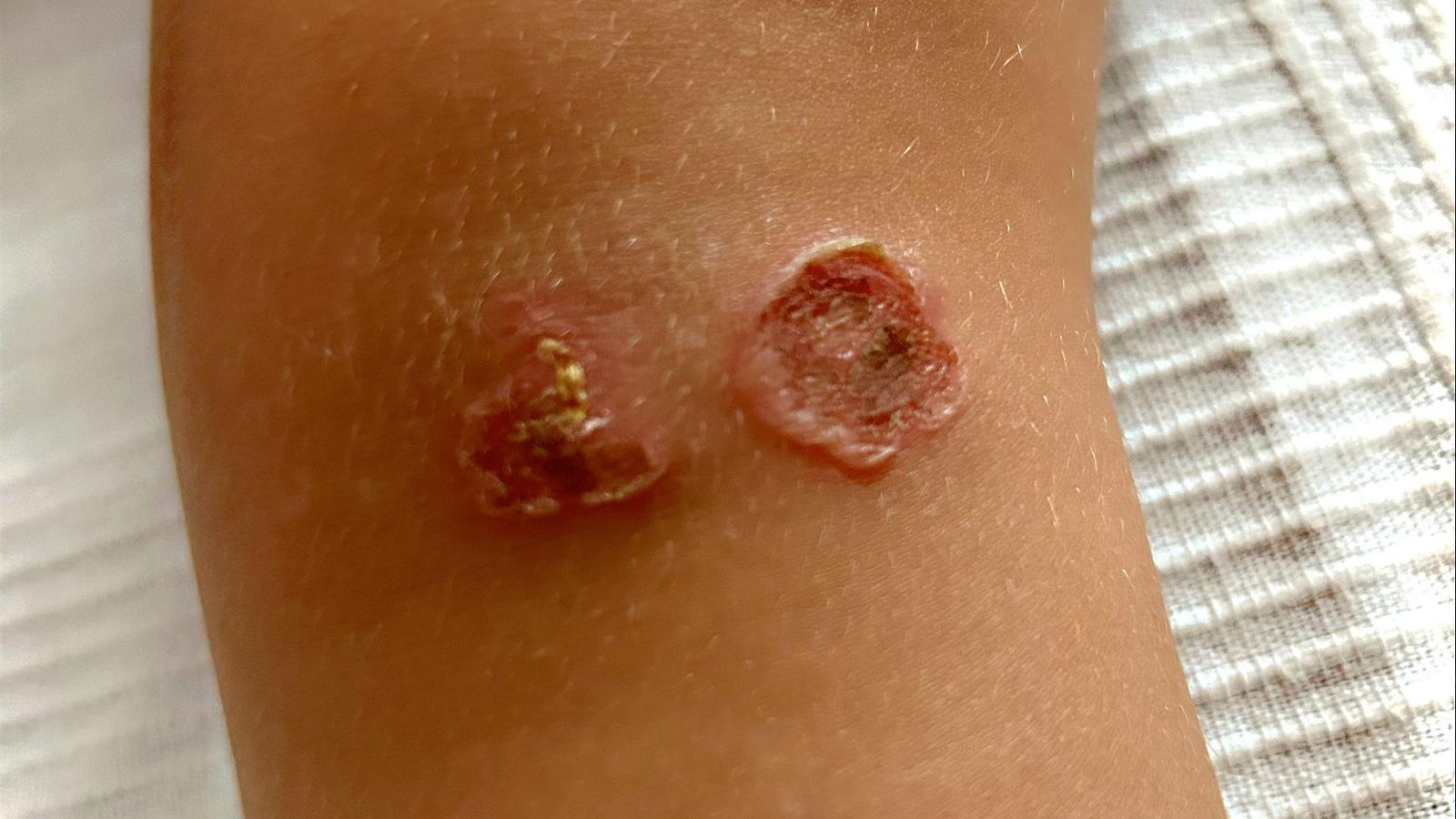Impetigen, the skin disease that has skyrocketed among children in the Balearic Islands
Common in summer, it is opportunistic: it is caused by bacteria in the dermis, which take advantage of wounds to penetrate the epidermis and access the blood.


PalmIt's a humid summer day, and the air is thick with mosquitoes. A three-year-old boy is bitten on the cheek and begins to scratch vigorously, causing the skin to itch. The wound is treated and a bandage is applied, and in principle, everything is resolved. But the next day, redness begins to appear and a honey-colored scab gradually forms. For pediatricians, the diagnosis is clear. He has impetigo, a common summer skin condition caused by bacteria in the dermis. Normally, they reside within the skin barrier, but if there is a wound or bite, they can penetrate and cause an infection. It can be localized or spread throughout the skin, either because the child has scratched other areas with dirty, infected hands, or because the germs have entered the bloodstream and spread throughout the body.
According to IB-Salut data, the evolution of cases shows an upward trend since 2021, when 5,619 diagnoses were recorded, of which 4,279 were in children under 14 years old. The following year there were 8,606 and 6,827, respectively; in 2023, they rose to 12,738 and 10,027. Last year there were 12,391 and 9,627. This year there have already been 5,173 cases, of which 3,919 were in children.
The usual patient profile, explains the pediatrician at the Es Blanquer health center in Inca, Nerea Gallego, is children between 2 and 5 years old. "They're the ones who have the most contact with each other. They scratch with dirty nails, get a wound, scratch again, fall to the ground, and have even dirtier hands, which facilitates the spread of the germ," she explains. Generally, the lesions begin around the nose and mouth, as these are parts of the body that children touch the most. From there, if the child is caught early and a doctor is seen, the progress can be halted. Otherwise, a vicious cycle of spread ensues, where the child scratches again. "Most of the time, children don't notice practically anything, beyond a slight itch. They see the scab and pick it off," says Gallego.
Impetigo can cause two types of lesions depending on which of the two bacteria causes it. There are those that form a honey-colored crust, more common in the nasal or oral area, and those that look like a cigarette burn, more common on the legs and buttocks, explains Rocío Casado, a pediatrician at the Santa Ponça health center, who is also vice president of the Association of
Post-pandemic expansion
Why is it more common in children? "Their immune systems are much more immature, they get wounds more frequently, and mosquitoes attack them. Added to all this is the fact that their skin is much thinner and more easily broken," explains the doctor, who also analyzes case numbers. "Before the pandemic, we also had many cases, but with the lockdown, we confined children in a bubble, and when we came out, cases skyrocketed," says Casado. This increase has been contributed to by the fact that there are now more mosquitoes than before, many of them tiger mosquitoes.
The incubation period from the moment of infection is difficult to estimate, but it is between one and three days. However, the first lesion can be noticed within 24 hours, and it is possible that it has already spread throughout the body through the blood. According to Casado's experience, 60% of impetigo cases involve localized lesions, and the rest are spread throughout the body. The usual treatment is with antibiotic cream. "With traditional ointment, the typical germ has developed resistance, but a new product came out in 2018 that is effective. If the lesion is localized, burning is enough. However, if it's already in the blood and spreads throughout the body, an oral antibiotic may be necessary to attack the disease from within the body," Casado explains.
Beyond the fact that it causes noticeable lesions that can alarm parents, it's a condition that pediatricians have already mastered, because in the summer they see cases every day. Children go to the pool, the beach, and camps, and their skin is more exposed. They hug, hit each other, and share towels. If there are any wounds, there's already a risk. "It's a typical disease, it has no side effects and is harmless. It's somewhat uncomfortable for the child because it may itch, but nothing more. Impetigo has always been present, and there's no need to raise alarm," explains Edelmiro Vergés, a primary care pediatrician, who is also concerned about the increase in cases.
If a parent sees a strange lesion on their child near the mouth or nose, there's no need to go to the emergency room. "Most health centers can provide a quick appointment. In the meantime, try to avoid contact with other children, at least until one day after starting treatment," warns Gallego. As with all infectious diseases, prevention is key. Nails should be kept short, teeth should be clean, and if there is a wound or scab, clean it with soap and water. If the wound turns red, begins to ooze, or turns yellow, it's time to see a doctor, who will begin treatment.
